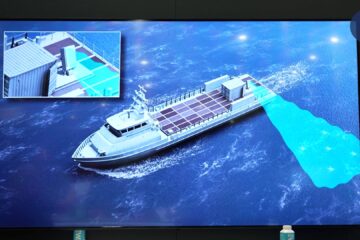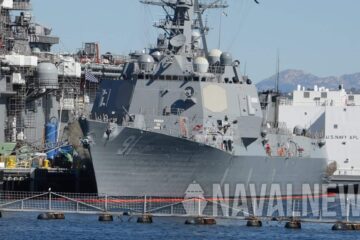Boeing press release
A Boeing-led team has demonstrated manned-unmanned teaming (MUM-T) capabilities in a virtual environment using the Navy’s MQ-25TM StingrayTM unmanned aerial refueler, the E-2D Advanced Hawkeye airborne command-and-control aircraft and the F/A-18 Super Hornet.
The demonstration, sponsored by the Office of Naval Research, used Northrop Grumman’s portable E-2D simulator in conjunction with Boeing’s F/A-18 and MQ-25 simulations to establish a data link network that was used to supervise MQ-25 flight operations.
The simulated mission scenarios included the E-2D successfully acting as the air wing “tanker king” while the MQ-25 refueled the F/A-18, in addition to supervising the MQ-25 during an intelligence, surveillance and reconnaissance mission. The E-2D was able to conduct MUM-T operations with the MQ-25 using only existing operational flight program software.
“Two of our key findings from this early demonstration with existing data links are that initial MUM-T capability between MQ-25, E-2D and F/A-18 is achievable with minimal change to the crew vehicle interface and could be integrated into earlier MQ-25 operational deployments.”
Don “BD” Gaddis, MQ-25 Advanced Design at Boeing
The team also demonstrated how anticipated carrier air wing concepts – such as the F/A-18 and E-2D changing the tanker’s orbit station, flight path or aerial refueling store payload – were made routine and repeatable with the unmanned MQ-25. This required minimal changes to the F/A-18 cockpit display, helping to reduce pilot workload while supervising unmanned operations and providing consistency with how pilots operate and train today.

Another more advanced MUM-T mission simulation showed how an open behavioral software framework can be used to aggregate traditional unmanned system commands into an overall autonomous mission behavior.
“As a result, pilots can call a ‘play’ for the unmanned system, much like a coach.” “This ‘play call’ ability greatly simplifies the supervising pilot’s workload and minimizes the data link exchanges required. It’s all part of building platform-agnostic, portable and reusable MUM-T software.”
Don “BD” Gaddis, MQ-25 Advanced Design at Boeing
MUM-T is a key future capability outlined in the Navy’s Unmanned Campaign Plan. The framework is the Navy’s strategy for integrating unmanned systems to provide lethal, survivable and scalable effects in support of carrier strike group operations.
“This demonstration of the E-2D Advanced Hawkeye controlling the MQ-25 builds on our experience in integrating unmanned systems into carrier flight operations. As the airborne command and control node, E-2D will be a critical component to enabling the U.S. Navy’s Unmanned Campaign Framework.”
“We work closely with industry partners and the Navy in support of meaningful technology demonstrations that showcase E-2D’s agile environment, interoperability and unmatched command and control capabilities.”
Janice Zilch, vice president, Manned Airborne Surveillance Programs at Northtrop Grumman.
Future Boeing MUM-T demonstrations will involve additional mission areas, interface enhancements, autonomous behaviors and resilient, protected networks.
-End-






